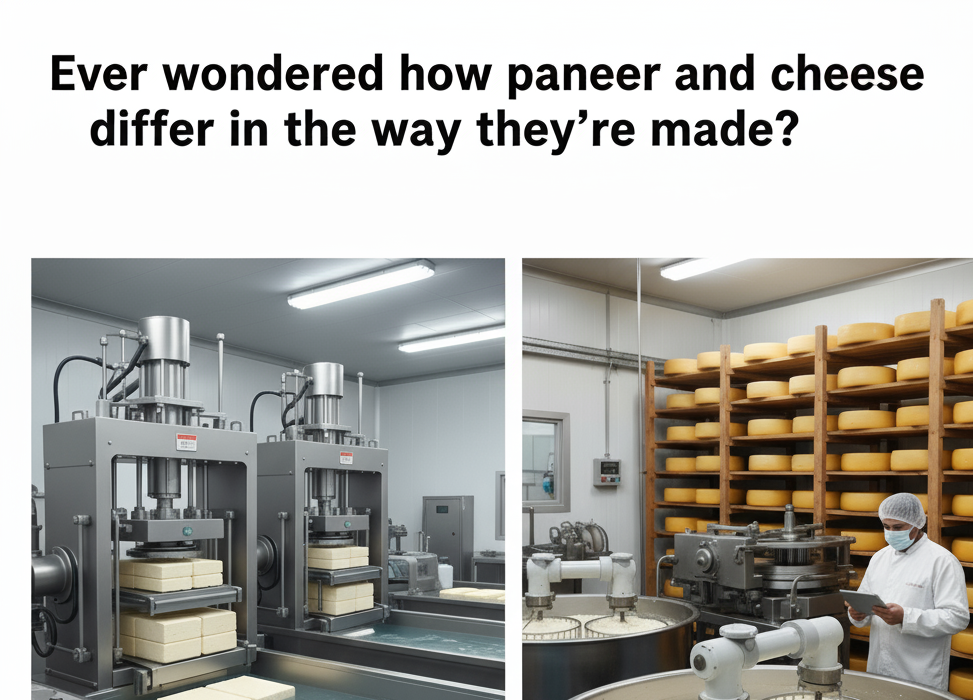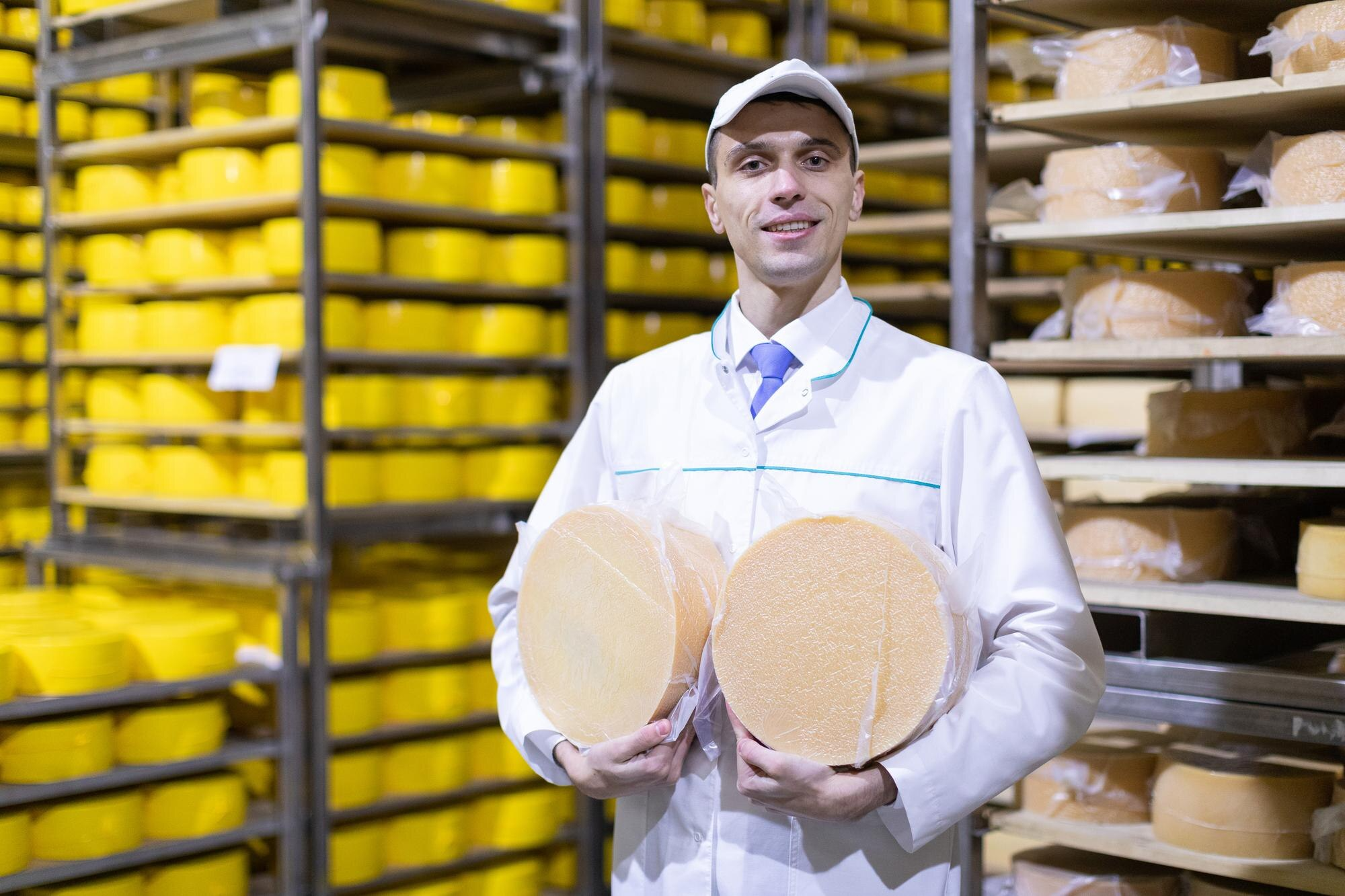Ever wondered how paneer and cheese differ in the way they’re made?
While both paneer and cheese come from milk, their manufacturing processes differ greatly, especially in large-scale production. Here’s how they compare:
1. Milk Standardization
Both processes begin with milk standardization to achieve the right balance of fat and protein. Automated systems in large-scale production ensure consistent quality and optimal curd formation.
2. Coagulation: Curd Formation
- For Cheese:
Rennet is added to milk to coagulate it in curdling vats. The temperature and acidity are controlled to form curds, essential for cheese production. - For Paneer:
Milk is curdled using lemon juice or vinegar, which is a quicker and simpler process. No rennet or cultures are needed, making it faster and cost-effective for large-scale production.
3. Pressing and Shaping
- For Cheese:
Cheese curds are pressed using cheese presses to remove excess whey and shape the cheese. Some cheeses are aged in maturation rooms to develop their flavor. - For Paneer:
In paneer production, curds are pressed into blocks using paneer pressing machines. Since paneer isn’t aged, the blocks are cooled in chilling vats to solidify.
4. Aging Process
Cheese is aged in temperature-controlled rooms to develop its flavor and texture, sometimes for months. Paneer, however, is always fresh and does not undergo aging.
5. Packaging and Quality Control
Both products are packaged using automated systems to ensure hygiene and consistency. Packaging helps maintain freshness and quality, especially in large-scale production.
Key Differences in Paneer vs Cheese Manufacturing
| Process | Paneer | Cheese |
| Coagulation | Acidification (lemon/vinegar) | Rennet-based coagulation |
| Pressing | Paneer pressing machines | Cheese presses with adjustable pressure |
| Aging | No aging | Aging rooms for maturation |
| Cooling | Dip chilling vats | Aging and maturation |
Conclusion: Efficient Production for Fresh & Aged Products
The paneer manufacturing process is faster and simpler, ideal for high-volume production. Cheese production, on the other hand, requires more steps, including rennet coagulation, pressing, and aging. Understanding these differences helps large-scale producers optimize their operations for both fresh paneer and aged cheeses.




